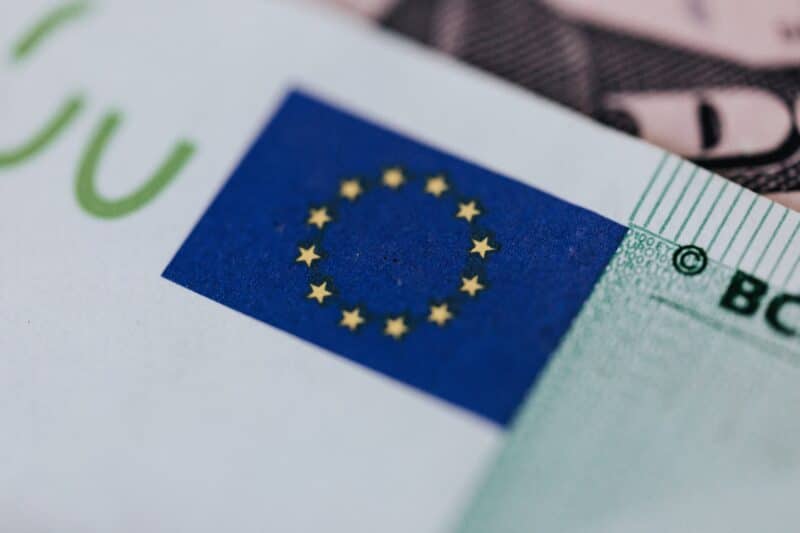After a challenging year in 2023, characterized by overall economic stagnation, 2024 brings positive changes. Economic growth in the first months of this year was higher than expected, which, combined with falling inflation, creates favorable conditions for a gradual economic recovery in the coming years. The European Commission’s spring forecast predicts moderate but stable GDP growth and a further decline in inflation, contributing to an improvement in the economic situation across the European Union and the euro area.
GDP Growth Forecast for 2024-2025
According to the latest European Commission forecast, GDP growth in 2024 is expected to be 1.0% in the EU and 0.8% in the euro area. In 2025, further economic growth is projected at 1.6% in the EU and 1.4% in the euro area. These forecasts indicate a gradual but stable economic recovery after a difficult period of stagnation that began at the end of 2022.
One of the main drivers of this growth is expected to be increasing private consumption. Higher real wages and greater employment lead to an increase in real disposable incomes, which in turn enhances households’ spending capacity. However, the propensity to save remains high, which may partially dampen private consumption.
Inflation: Trends and Forecasts
The inflation rate measured by HICP (Harmonized Index of Consumer Prices) in the EU, which was 6.4% in 2023, is expected to fall to 2.7% in 2024 and then to 2.2% in 2025. In the euro area, a similar trend is forecast: from 5.4% in 2023 to 2.5% in 2024 and to 2.1% in 2025. The decline in inflation is mainly driven by lower prices for non-energy goods and food, while energy price inflation may rise slightly. Service price inflation is expected to gradually decrease as wage pressures weaken.
It is noteworthy that inflation in the euro area reached a record high of 10.6% in October 2022 but is now rapidly declining. In April 2024, inflation is expected to reach 2.4%, the lowest level in two years.
Stable Labor Market Despite Moderate Growth
Despite the overall economic slowdown, the labor market in the EU remains stable. In 2023, the EU created over two million jobs, and the activity and employment rates of people aged 20-64 reached record levels of 80.1% and 75.5%, respectively. The unemployment rate in the EU in March 2024 was a record low of 6%.
Forecasts indicate that employment growth in 2024 will slow to 0.6%, and in 2025 it will decline to 0.4%. Nevertheless, the unemployment rate should remain stable and low. Nominal wage growth, which was 5.8% in 2023, has begun to slow, and this trend is expected to continue.
Public Finance Situation
The public sector deficit in the EU, which significantly decreased in 2021-2022, stopped declining in 2023 due to weakened economic activity. However, in 2024, a further reduction of the deficit to 3% is expected, and to 2.9% in 2025. This decrease will result from the gradual phasing out of extraordinary energy support measures.
The debt-to-GDP ratio in the EU in 2024 is expected to stabilize at 82.9%, with a slight increase of about 0.4 percentage points in 2025. Higher debt servicing costs and lower nominal GDP growth are the main factors influencing this situation.
Geopolitical Risks and Uncertainty
In recent months, uncertainty about the economic future has increased due to geopolitical tensions. The ongoing Russian war against Ukraine and conflicts in the Middle East increase the risk of deteriorating economic prospects. Additionally, inflation in the USA may lead to further delays in interest rate cuts, which in turn will tighten global financial conditions.
Within the EU, a slower decline in inflation may force central banks to delay interest rate cuts, affecting the pace of economic growth. Moreover, some member states may introduce additional consolidation measures in their 2025 budgets, which might not be included in the current forecast but could impact economic growth.
Summary
After a period of economic stagnation, the European Commission’s forecasts for 2024-2025 indicate moderate but stable economic growth in the EU and the euro area. GDP growth is expected to be driven by increasing private consumption, supported by higher real wages and employment. Although inflation will gradually decline, it will aid in improving the economic situation, and the labor market will remain stable despite moderate employment growth.
However, uncertainty related to geopolitical tensions and potential political changes within the EU poses a challenge for future economic growth. As the global economy becomes more complex and diverse, monitoring these factors and adjusting economic policies will be crucial to ensuring sustainable and stable development.
Context of the Economic Forecast
The European Commission’s economic forecast is based on a range of technical assumptions regarding exchange rates, interest rates, and commodity prices as of April 25, 2024. It also includes data available up to April 30, assuming the continuation of current policy strategies unless new, detailed strategies are announced.
The European Commission publishes two comprehensive economic forecasts annually – spring and autumn – and two interim forecasts – winter and summer. Comprehensive forecasts cover a wide range of economic indicators for all EU member states, candidate countries, EFTA countries, and other major economies. Interim forecasts focus on annual and quarterly GDP and inflation data for the current and following year for all member states, as well as aggregate data for the entire EU and the euro area.
